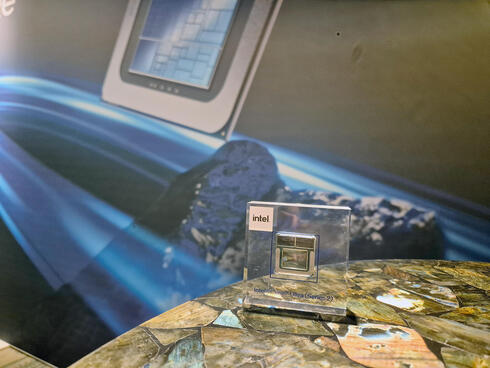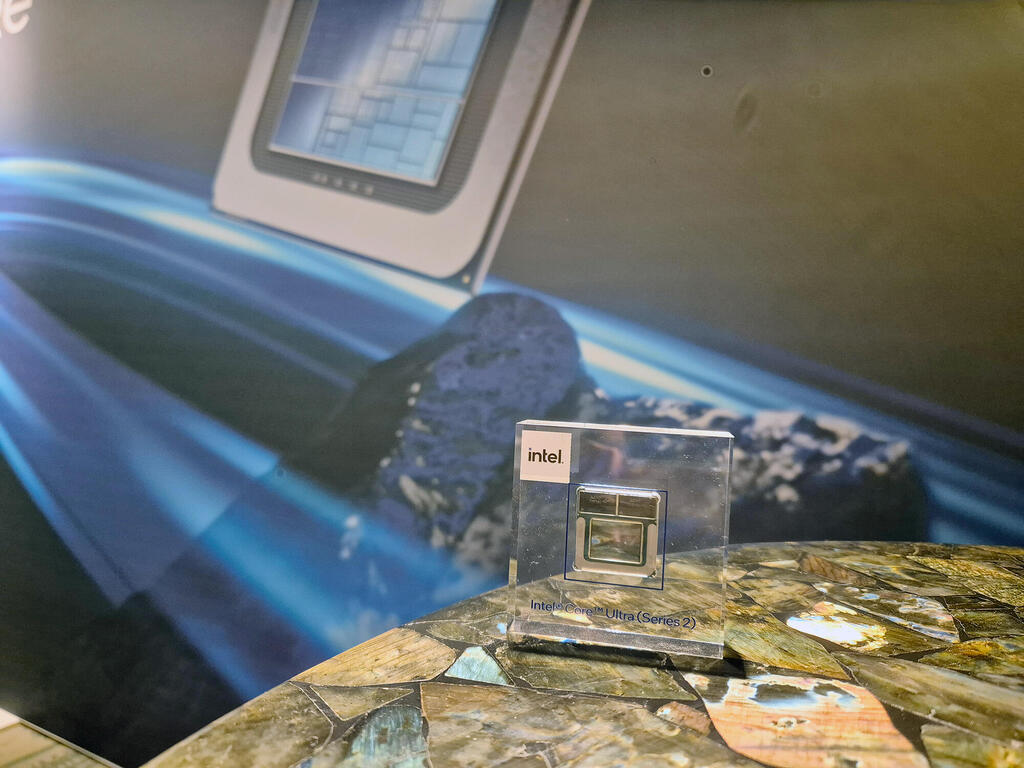
Intel's Lunar Lake chips driven by Israeli innovation challenge Qualcomm and AMD
Development centers in Haifa and Petah Tikva played a crucial role in Intel's AI-powered processors.
Intel launched on Tuesday the second generation of its Lunar Lake processors, also known as Intel Core Ultra. These new processors integrate AI capabilities directly into the computer, rather than relying solely on cloud connections. With this launch, Intel aligns itself with the Copilot+ PC category that Microsoft introduced in May, which until now only featured computers with Snapdragon processors from competitor Qualcomm.
At the time of the Copilot+ launch, it was perceived as a setback for Intel, a long-time partner of Microsoft, as the processor manufacturer seemed to be lagging behind in the AI field. Since then, Intel has released disappointing financial reports, including a quarterly loss of $1.6 billion, announced a massive round of layoffs, shut down its startup accelerator Intel Ignite, and, according to some reports, considered splitting into two separate companies.
However, Intel now makes it clear that it has no intention of abandoning the rapidly growing AI sector. The company claims that the new processors don't just close the gap with competitors—they surpass them. Intel executives presented various performance comparisons, both against the company's previous processors and Qualcomm's and AMD’s competing models, emphasizing that the new Core Ultra processors outperform the competition in every test by a significant margin. The power consumption is about 50% lower than the previous model launched by Intel about a year ago, and both the graphics and main processors are faster. According to Josh Newman, General Manager and Vice President of Product Marketing and Management, Client Computing Group at Intel, "We achieved more than we planned." A significant portion of the development was carried out at the company's R&D centers in Haifa and Petah Tikva.
What does this mean for users? According to Intel's official data, the low power consumption allows for approximately 20 hours of video playback on a single charge or more than 10 hours of office application use—longer than what competitors offer. Intel also showcased performance tests in gaming, noting that they tested 45 games, of which 23 did not run at all on Qualcomm processors.
Snapdragon processors were introduced to Windows computers after their success in mobile devices—Qualcomm's processors power leading flagship smartphones and also have versions suitable for less powerful and more affordable devices. Intel, on the other hand, missed the mobile revolution, and when the company's executives were asked if they planned to compete with Qualcomm in the mobile market, they tersely responded that there were no such plans.
Some of the new capabilities included in Copilot+ PCs will not be available immediately—Microsoft is expected to release a Windows update in November that will enhance the capabilities of computers based on the new Lunar Lake processors. At the launch event, Intel demonstrated some of the AI capabilities of the new processors, such as a tool that allows users to create digital art scenes using voice commands—simply dictate commands to the computer, and it will generate appropriate images. Another tool helps identify deepfakes in video clips.
Leading computer manufacturers are currently unveiling new models based on Intel's new processors, which are available for pre-order and are expected to reach stores and consumers by the end of the month.















